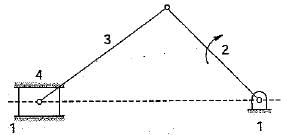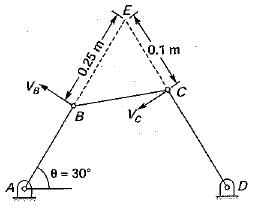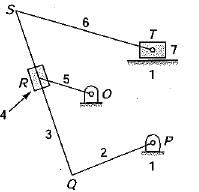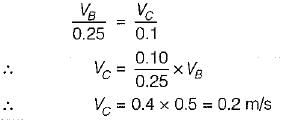Test: Velocity & Acceleration Analysis - 1 - Mechanical Engineering MCQ
10 Questions MCQ Test - Test: Velocity & Acceleration Analysis - 1
The linear velocity of a point B on a link rotating at an angular velocity ω relative to another point A on the same link is
According to Kennedy's theorem, the instantaneous centers of three bodies having relative motion lie on a
The instantaneous center of a slider moving in a curved surface lies
The given figure shows a slider mechanism in which link 1 is fixed. The number of instantaneous centers would be

A four bar mechanism ABCD is shown in the given figure. If the linear velocity ‘VB’ of the point ‘B’ is 0.5 m/s, then the linear velocity ‘Vc’ of point ‘C’ will be

Examine the figure shown below wherein the numbers indicate the links:

Which of the statements given below are correct?
1. I34 is at ∞, perpendicular to QS
2. I45 is at perpendicular to QS
3. I71 is at T
4. I45 is at R
A line drawn through an instantaneous center and perpendicular to the plane of motion is called instantaneous axis. The locus of this axis is known as
The instantaneous center of rotation of a circular disc rolling on a straight path is
The locus of instantaneous center of a moving body relative to a fixed body is known as the
The space centrode of a circular disc rolling on a straight path is




















